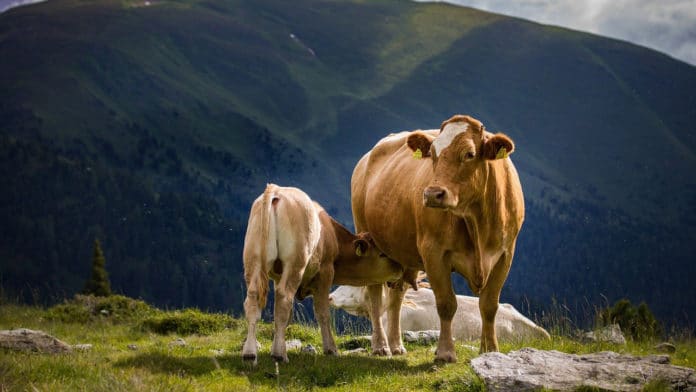It is notoriously difficult to break down the plastic. Several artificial ways have been developed for this task.
Now, Austria scientists have found plastic-eating bacteria in cow’s rumen – one of the four compartments of its stomach. They found that the cow’s rumen can digest certain types of ubiquitous material.
The main distinction in a cow digestive system or a ruminant digestive system is that the stomach has four separate compartments, each with a unique function. In contrast, most other animals only have a single compartment with a unified functionality.
The four compartments allow ruminant animals to digest grass or vegetation without thoroughly chewing it first. Instead, they only partially chew the vegetation, then microorganisms in the rumen section of the stomach break down the rest.
Dr. Doris Ribitsch of the University of Natural Resources and Life Sciences in Vienna said, “A huge microbial community lives in the rumen reticulum and is responsible for the digestion of food in the animals, so we suspected that some biological activities could also be used for polyester hydrolysis, a type of chemical reaction that results in decomposition.”
“In other words, these microorganisms can already break down similar materials, so the study authors thought they might be able to break down plastics as well.”
Scientists observed three kinds of polyesters: polyethylene terephthalate, commonly known as PET, a biodegradable plastic, and biobased material (Polyethylene furanoate, PEF).
The rumen liquid was obtained from a slaughterhouse in Austria to get the microorganisms for testing for the study. They then incubated that liquid with the three kinds of plastics they were testing (which were tried in both powder and film form) to see how successfully the plastic would separate.
A screening with model substrates demonstrated hydrolytic activities of rumen fluid on p-NP-esters with four to eight carbon atoms. Scientists found that the rumen fluid efficiently broke down all types of plastics. They also found that plastic powders breaking down quicker than plastic film.
A similar study was done on investigating single microorganisms. Scientists found that the rumen liquid was more effective, which might indicate that its microbial community could have a synergistic advantage – that the combination of enzymes, rather than any one particular enzyme, is what makes the difference.
Ribitsch said, “Due to the large amount of rumen that accumulates every day in slaughterhouses, upscaling would be easy to imagine.”
According to scientists, the study represents a sustainable way to reduce plastic litter. Scientists are now looking forward to further research on the topic, saying that microbial communities have been underexplored as a potential eco-friendly resource.
Journal Reference:
- Felice Quartinello et al. Together Is Better: The Rumen Microbial Community as Biological Toolbox for Degradation of Synthetic Polyesters. DOI: 10.3389/fbioe.2021.684459
